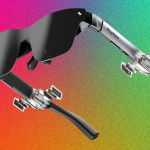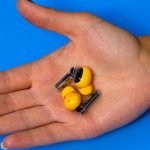As Apple suffered a massive brain drain of talented chip engineers who left the technology giant for greener pastures, the improvements in its A-series of SoCs slowly diminished. This started with the A15 Bionic, which lacked any notable CPU performance gains for this very reason, and this problem trickled down to the A16 Bionic. Fortunately, Apple plans to allocate more resources to its upcoming A17 Bionic, likely with a higher budget and an increased headcount of chip designers.
Analyst believes that a slowdown of chipset upgrades will force a sales decline, which makes it imperative for Apple to allocate as many resources as it can for the A17 Bionic development
The A17 Bionic is said to be Apple’s and possibly the world’s first 3nm chip from TSMC. TSMC is expected to kick off mass production in the second half of this year, just in time for Apple to prepare the SoC for its top-tier iPhone 15 Pro and iPhone 15 Ultra. In addition to both flagships seemingly shipping with more exclusive features, analyst Ming-Chi Kuo believes that Apple has allocated more sources towards the A17 Bionic’s development. His analysis is simple; the fewer chipset upgrades there are, the more the company is expected to suffer in terms of annual sales.
“The slowdown of processor upgrades is unfavorable to the sales of end products (such as A16 and M2 series chips). Therefore, to ensure that the world’s most advanced 3nm processors can enter mass production smoothly in 2023–2025, and the performance upgrade and power consumption improvement can significantly improve vs. predecessors, Apple has devoted most of its IC design resources to the development of processors.”
Kuo believes that Apple will continue to use TSMC’s 3nm process until 2025, meaning that the Taiwanese semiconductor manufacturer will likely have improved iterations of its technology available to Apple. In addition to focusing on improved battery savings, which is the actual advantage of TSMC’s 3nm process, we could also see Apple’s chip engineers introduce some welcome performance improvements and features like ray tracing, which were supposed to be present in the A16 Bionic but discarded in the final product.
Unfortunately, this decision will mean that the company will have to pull resources from its other in-house goals, which involve its own 5G modem, Wi-Fi, and Bluetooth chip, giving plenty of leverage to the likes of Qualcomm and Broadcom. Then again, the A17 Bionic will be the heart of the iPhone 15 Pro and iPhone 15 Ultra, and if that disappoints, then consumers may have little reason to upgrade, especially seeing as how the A15 Bionic and A16 Bionic handle things perfectly fine in current iPhone models.
The post Apple’s A17 Bionic To Get More Chip Design Resources, Possibly Hinting At New Features, Improved Performance And Efficiency by Omar Sohail appeared first on Wccftech.







